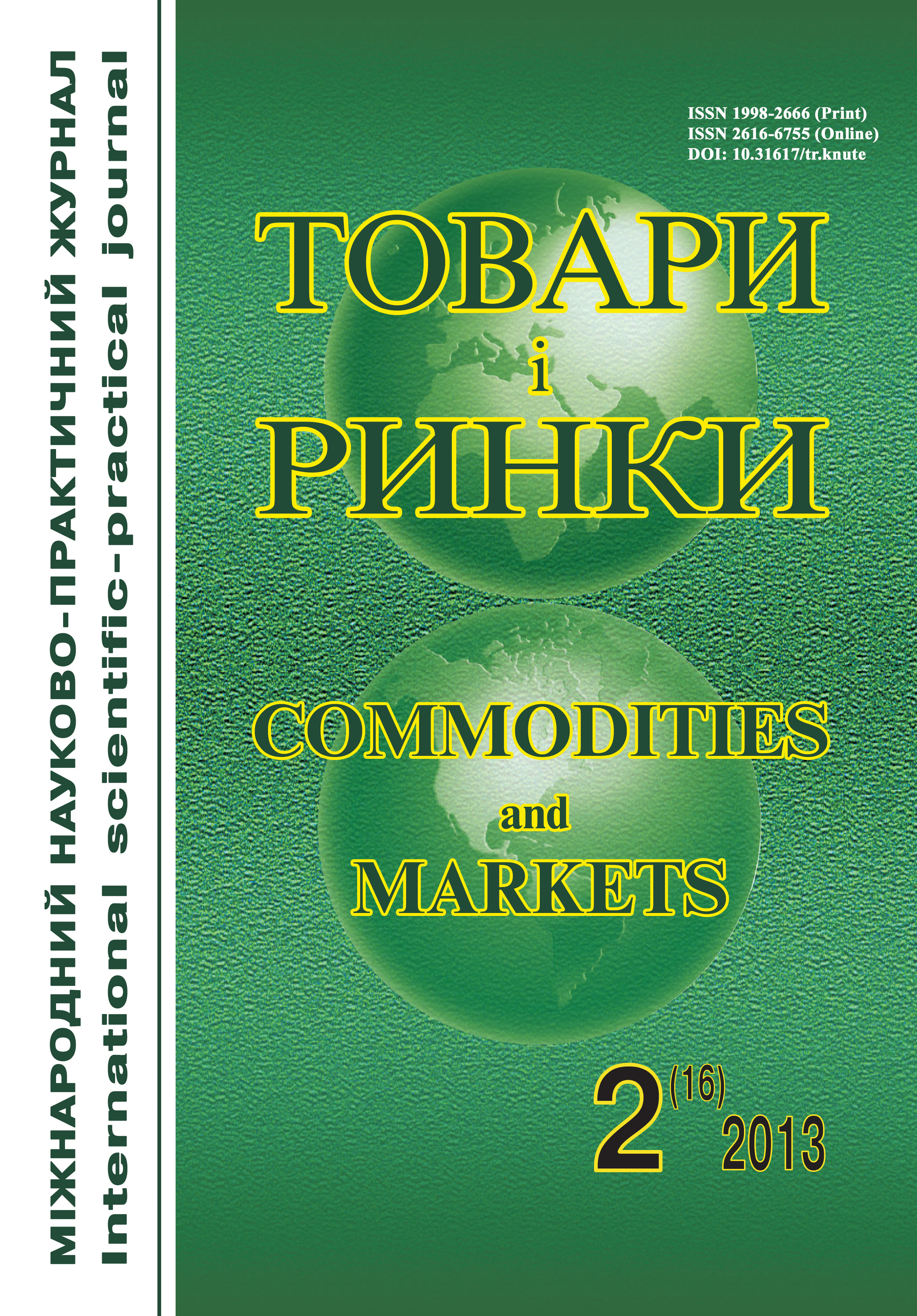Identification of the perfumery liquid products
Keywords:
perfumery liquid products, eau de toilette, standartisation, identification, quality, counterfeitingAbstract
Background. Modern perfume market in Ukraine is quite saturated, but the reduction of own manufacture has increased the number of imported products and the increase in the share of counterfeit products and products of low quality. The purpose of the article is to review current Ukrainian national standards for perfumery liquids, their analysis for the identification and detection of counterfeit goods.
Material and methods. The research was conducted by organoleptic and physico-chemical methods, that regulated of the current regulations, including gas chromatography and volumetric method.
Results. The study highlights the strengths and weaknesses of the current regulatory framework for perfumery and cosmetic products in comparison with the standards of the USSR and the Russian Federation. It is shown that national standards of Ukraine include an extensive classification of fragrance products; describe in detail the methods of products testing, impose requirements on product safety and allow professionals to accurately determine the identity of a particular product type.
Five samples of toilet water were identified. Samples belonging to a certain type of perfumery liquids were established and counterfeit products were revealed. It is shown that uniquely identify a liquid perfumes is possible only by a set of indicators, the main ones being the volume fraction of ethanol and the sum of the mass fraction of fragrances.
Conclusion. The domestic market is saturated with counterfeit perfume products foreign manufacture, the identification of which is possible only if a comprehensive study that includes an analysis of marking, identification organoleptic and physicochemical parameters. To unequivocally establish authenticity proposed to determine the chemical composition of the fragrances of perfumes and their origin.
References
Lucіv N. V. Tovaroznavchі aspekti doslіdzhennja rinku parfumernih virobіv v Ukraїnі / N. V. Lucіv // Naukovij vіsn. NLTU Ukraїni : zb. nauk.-tehn. pr. — L'vіv : RVV NLTU Ukraїni. — 2013. — Vip. 23.04. — S. 252—261.
Sumarnij obsjag іmportu ta eksportu okremih pіdgrup tovarіv za kodami UKTZED. — Rezhim dostupu : http://arc.customs.gov.ua/dmsu/control/cstat/f11a/showstat.
Barna M. Ju. Vidi fal'sifіkacії parfumernoї produkcії / M. Ju. Barna // Naukovij vіsn. NLTU Ukraїni : zb. nauk.-tehn. pr. — L'vіv : RVV NLTU Ukraїni. — 2010. — Vip. 20.12. — S. 133—137.
Vilkova S. A. Nauchno-prakticheskie osnovy jekspertizy potrebitel'skih tovarov : monogr. / S. A. Vilkova. — Jengel's : Region. inf.-izd. centr PKI, 2003. — 264 s.
Votchenіkova O. V. Ocіnka rіvnja jakostі parfumernih tovarіv / O. V. Votchenіkova // Tovaroznavstvo ta іnnovacії : zb. nauk. prac'. — Donec'k : Vid-vo DonNUET, 2009. — Vip. 1. — S. 120—131.
GOST 29188.6–91. Izdelija parfjumerno-kosmeticheskie. Gazohromatograficheskij metod opredelenija jetilovogo spirta. — Vved. 1993—01—01. — M. : Izd-vo standartov, 1992. — 6 s.
DSTU 4710:2006. Virobi parfumernі rіdinnі. Zagal'nі tehnіchnі umovi. — [Chinnij vіd 2008—07—01]. — K. : Derzhspozhivstandart Ukraїni, 2008. — 14 s.
DSTU 5010:2008. Produkcіja parfumerno-kosmetichna. Pakuvannja, markuvannja, transportuvannja і zberіgannja. — [Chinnij vіd 2009—01—01]. — K. : Derzhspozhivstandart Ukraїni, 2008. — 11 s.
DSTU 5009:2008. Virobi parfumerno-kosmetichnі. Pravila prijmannja, vіdbirannja prob, metodi organoleptichnih viprobuvan'. — [Chinnij vіd 2009—01—01]. — K. : Derzhspozhivstandart Ukraїni, 2008. — 8 s.
DSTU 5008:2008. Rіdini parfumerno-kosmetichnі. Metodi viznachennja ob’єmnoї chastki etilovogo spirtu. — [Chinnij vіd 2009—01—01]. — K. :
Derzhspozhivstandart Ukraїni, 2008. — 8 s.
Pisarenko T. P. Osoblivostі zastosuvannja organoleptichnih і fіziko-hіmіchnih metodіv doslіdzhen' dlja ekspertizi avtentichnostі parfumernih tovarіv / T. P. Pisarenko, A. O. Remіga // Tovaroznavstvo ta іnnovacії : zb. nauk. pr. — Donec'k : Vid-vo DonNUET, 2010. — Vip. 2. — S. 296—304.



